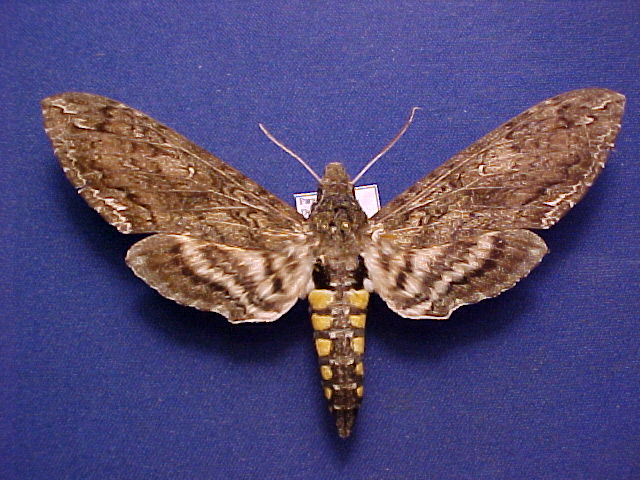
Manduca paphus by John Vriesi.
This site has been created by Bill Oehlke.
Comments, suggestions and/or additional information are welcomed by Bill.
TAXONOMY:
Family: Sphingidae, Latreille, 1802 |
|
|
Updated as per
AN ANNOTATED CHECKLIST OF THE SPHINGIDAE OF BOLIVIA, October 2007 Updated as per personal communication with Ezequiel Osvaldo Núñez Bustos, Argentina, March 2008 Updated as per personal communication with Ezequiel Bustos (Aguas Blancas, Salta, Argentina, 405m); December 2009 Updated as per personal communication with Ezequiel Nunez Bustos (Osununu Private Reserve, Misiones, Argentina, November 24, 2009); December 2009 Updated as per French Guiana Sphingidae; March 9, 2011 Updated as per CATE Sphingidae (Entre Rios, Argentina; Parana, Brazil); May 21, 2011 Updated as per personal communication with Alexander Buldring (Avanhandava, Sao Paulo, Brazil, January 15, 2013, 19:40): January 30, 2013 Updated as per "A Hawk Moths fauna of southern Maranhão state, Brazil, ... "; NEVA: Jahrgang 34 Heft 3 November 2013; via Jean Haxaire; April 5, 2014 Updated as per personal communication with Sergio D. Ríos Díaz in CATÁLOGO DE LOS SPHINGIDAE (INSECTA: LEPIDOPTERA) DEPOSITADOS EN EL MUSEO NACIONAL DE HISTORIA NATURAL DEL PARAGUAY; sent to me in July 2014 by Sergio D. Ríos Díaz. Updated as per personal communication with Joanna Rodriguez Ramirez (Chaco, Rio Negro and Neuquen; Argentina), January 21, 2015 Updated as per personal communication with Ezequiel Bustos (Shilap revta. lepid. 43 (172) diciembre, 2015, 615-631 eISSN 2340-4078 ISSN 0300-5267), January 4, 2016 Updated as per personal communication with Diogo Luiz (Buzios, Rio de Janeiro, Brazil, November 13, 2016), November 14, 2016 |

This site has been created by Bill Oehlke.
Comments, suggestions and/or additional information are welcomed by Bill.
TAXONOMY:
Family: Sphingidae, Latreille, 1802 |
Once treated as a subspecies of sexta, papus now has full species status. Jean Haxaire
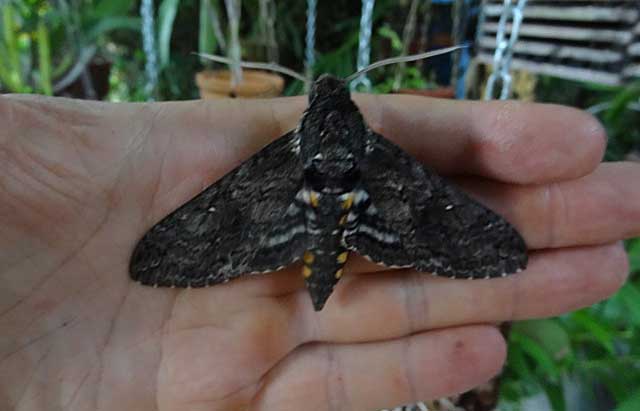
Manduca paphus, Avanhandava, Sao Paulo, Brazil,
January 15, 2013, courtesy of Alexander Buldring.
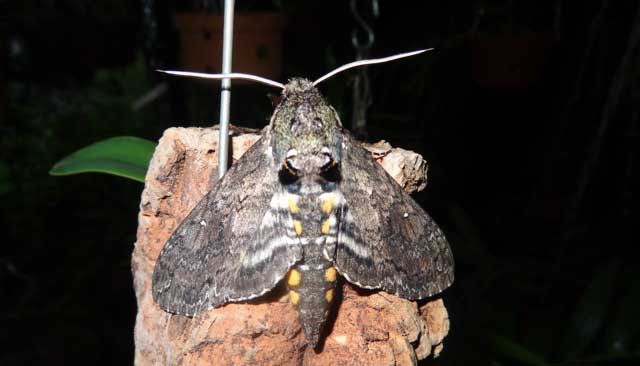
Manduca paphus, Avanhandava, Sao Paulo, Brazil,
January 15, 2013, courtesy of Alexander Buldring.
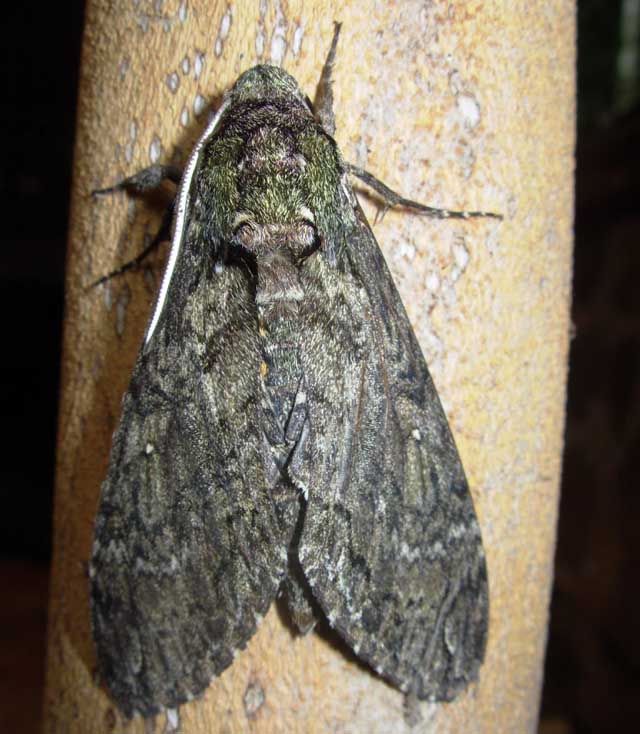
Manduca paphus, Yacutinga Private Reserve, Misiones Province,
(near border between Argentina and Brazil), February, 2008
courtesy/copyright of Ezequiel Osvaldo Núñez Bustos.
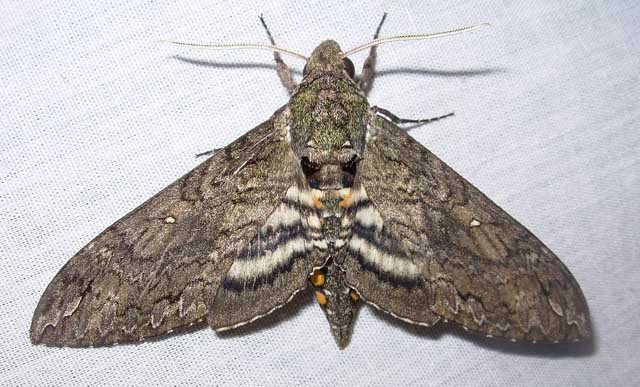
Manduca paphus, Osununu Private Reserve, Misiones Province,
November 24, 2009
courtesy/copyright of Ezequiel Osvaldo Núñez Bustos.
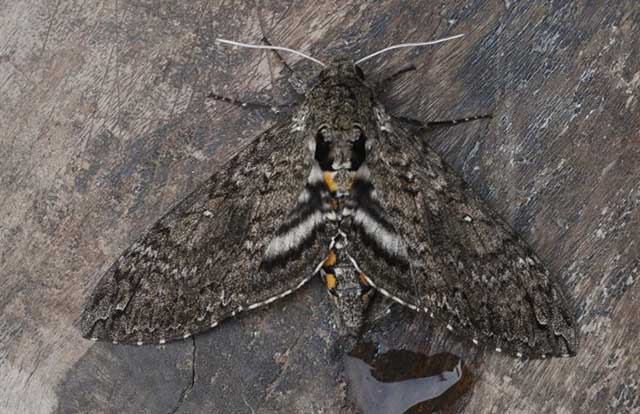
Manduca paphus, Buzios, Rio de Janeiro, Brazil,
November 13, 2016, courtesy of Diogo Luiz, id by Bill Oehlke.
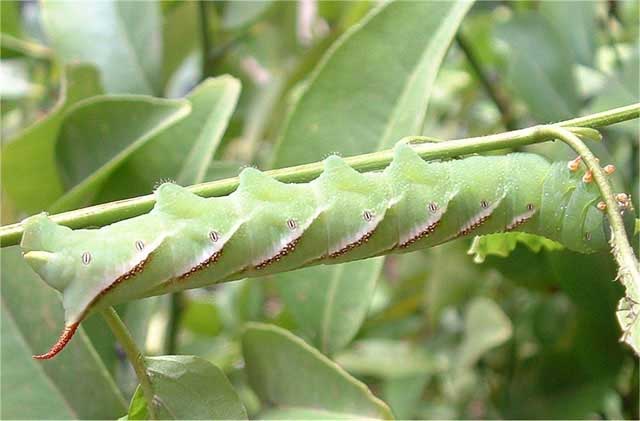
Manduca sexta subspecies from Rio Ceballos in Cordoba
Province, Argentina,
courtesy of Nigel Venters.
Use your browser "Back" button to return to the previous page.
Return to Sphingidae Index
Return to Sphingini Tribe
This page is brought to you by Bill Oehlke and the WLSS. Pages are on space rented from Bizland. If you would like to become a "Patron of the Sphingidae Site", contact Bill.
Please send sightings/images to Bill. I will do my best to respond to requests for identification help.
Enjoy one of nature's wonderments: Live Saturniidae (Giant Silkmoth) cocoons.
 Show appreciation for this site by clicking on flashing butterfly to the left. The link will take you to a page with links to many insect sites. |